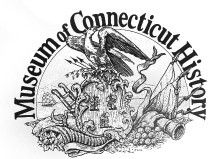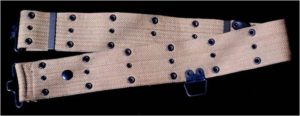David J. Corrigan, Museum Curator
First published in the CONNector magazine. Volume 19, No. 4, Fall 2017
Officer’s pistol belt with a snap fastener for attaching an ammunition pouch and a saber loopMarked “Nov./ Russell/1918.” (Accession #2017.206) Russell also manufactured cartridge belts worn by enlisted soldiers, which usually had other equipment attached, such as canteens and first aid kits.With the on-going commemoration of Connecticut’s role in World War I, staff of the Museum of Connecticut History has focused its collecting activity on acquiring examples of the myriad products manufactured in the state in support of the war effort. Although perhaps best known for the arms and ammunition made by Colt’s in Hartford, Winchester and Marlin in New Haven, and Remington-Union Metallic Cartridge Co. in Bridgeport, and hundreds of smaller companies around the state contributed mightilyto the effort to keep the country’s soldiers well-equipped for the duration of the war. The Museum is also collecting examples of equipment made elsewhere that was used by Connecticut soldiers. These recent acquisitions augment the large World War I collection assembled by State Librarian George Godard, who convinced dozens of Connecticut World War veterans to donate their collections of war souvenirs to the State Library in the 1920s and 1930s. These collections consisted primarily of artifacts such as battlefield pick-ups, French post cards, and German Pickelhaube helmets, but virtually no Connecticut-made military equipment.
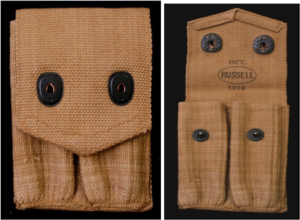
The ammunition pouch held 2 magazines for the Colt Model 1911 Automatic Pistol, the standard-issue sidearm. The flap on the ammunition pouch is a separate piece, stitched at the top and bottom where it meets the pouch, creating a slot for the pistol belt to slide through, attaching to the fastener on the back of the pouch. Marked “Oct./Russell/1918.” (Accession #2016.456)
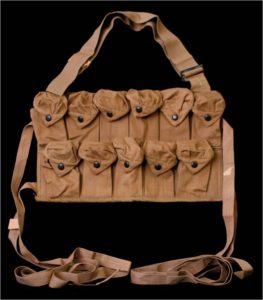
The Warner Brothers Co. of Bridgeport produced grenade vests which held eleven grenades. The top
strap went around the soldier’s neck, and the vest was held in place by the two straps around the back and waist. The grenades carried in these vests were most often the French-made “VB” fragmentation grenades, first developed around 1916, and named for the inventors Viven and Bessieres. They were fired from a launcher affixed to the barrel of a French Lebel rifle and, upon their arrival in France in early 1917,
American soldiers quickly jerry-rigged the launcher to fit their Model 1903 Springfield rifles until an
appropriate model was developed for their weapon. Marked “The Warner Bros. Co./March 918.” (Accession
#2016.459)
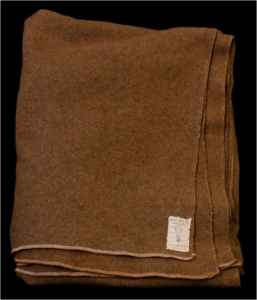
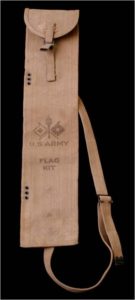
#2017.203)
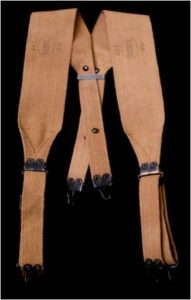
The hooks on the ends of the straps fit into the grommets on the belt. Marked “Oct./Russell/1918.” (Accession 2017.205)



